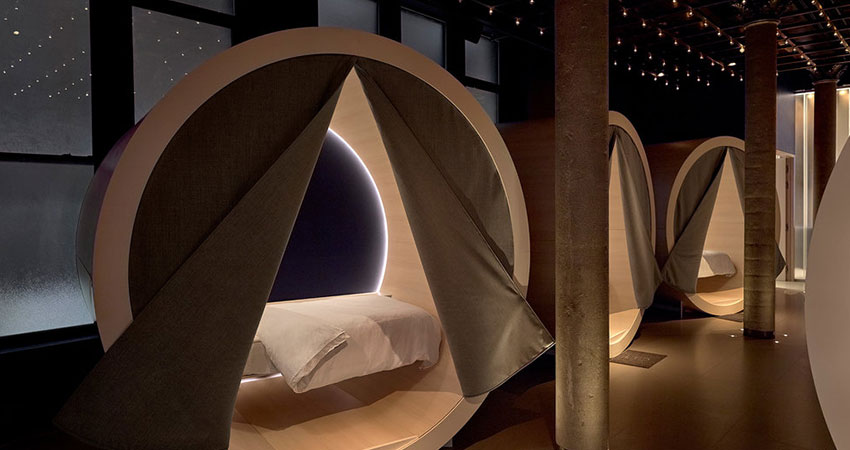Throughout the past year, retailers have been focused on providing creative, interactive and friction-free shopping experiences for consumers. As we head into 2019, we will see this evolution accelerate, with personalization and obsessive customer focus at the heart.
Expect a rise in new influencer marketing strategies that cater to a more individualized consumer experience. Brands will also trumpet their transparency as they develop more sustainable supply chains and sourcing practices demanded by today’s shoppers.
Lastly, the brand-consumer gap will continue to narrow. We will see brands engaging consumers in new ways throughout the purchase journey to better provide what they want when they want it, perfectly tailored to them as individuals.
What else can retailers expect in the coming year? Here’s more on my 2019 retail industry predictions:
Separation of “Chore” and “Cherish”
In 2019, retailers will continue to evolve the shopping experience to cater more directly to the modern mindset of consumers. They will create experiences that extend shopping and brand engagement beyond purchasing, immersing them in a 360-degree brand lifestyle experience. For example, brands will double down on experiences for “chore” purchases versus “cherished” items.
- For chore items (think commodities and everyday basics), retailers will focus on simplifying and streamlining the purchase journey. Whether by optimizing mobile offerings or doubling down on omnichannel tactics like buy online and pick up in-store, the name of the game is hyper convenience. Major retailers such as Target have already provided a personalized app where customers can shop and pick up items curbside.
- For cherish items (think discretionary spending or luxury items), retailers will strive for an elevated shopping experience to engage consumers and deliver the “wow” factor both in store and online. House of Vans in London and The Dreamery by Casper are each taking their own unique spin on this. House of Vans provides a cultural interactive pop-up retail experience featuring musical performances, skating exhibitions and art installations. The Dreamery by Casper takes try before you buy to new levels, letting shoppers test the beds with nap sessions at its New York store.
Influencer Marketing Gets a Makeover
Retailers this year will adapt influencer marketing strategies in the face of growing challenges to regain authenticity in the eyes of consumers. While the overall impact of influencers in retail will remain strong, brands will go beyond sponsored, transactional relationships with online personalities in response to the growing fatigue and disillusionment around this type of messaging. Brands will adjust their collaborations to better fit a given influencer’s established platform or community and “micro-influencers”— those with smaller but more targeted audiences — will take center stage.
- Take Arielle Charnas, the influencer behind fashion blog Something Navy, who had a wildly successful launch of her fall collection exclusively at Nordstrom, temporarily crashing the site. This launch showed the power one influencer can have on the consumer. The definition of influencer will also begin to change as leading brands begin asking shoppers to weigh in on potential new product designs via digital feedback experiences.
- Emerging beauty brand Glossier provides user-generated content through social media as its main influencer as it continues to grow in a competitive market. The company encourages its followers to share images and videos of themselves enjoying Glossier products. The company has found success since launching in 2010 by leveraging fans to enhance its influencer marketing strategy in a crowded beauty space.
Welcome to Generation Z(ustainability)
Gen Z, born after 1995, has been notable for its rejection of many norms associated with Millennials. This new demographic will keep shifting its buying dollars away from fast fashion, prioritizing sustainability and ethical sourcing practices when making purchases. Their focus on total supply chain transparency will create momentum that the most ethically-minded brands can use to foster dedicated, long-term customers and generate goodwill.
- Retailers will take a more holistic and transparent approach to meet the expectations of Gen Z. They will connect with this demographic by not only using technology to stitch together a faster, more efficient supply chain, but by doing it in ways that make their production choices transparent – revealing where goods were produced, under what conditions, and whether or not the materials and labor were ethically sourced. Everlane source only the finest materials and only partners with ethical factories that focus on fair working environments, while Patagonia continues to tout its use of recycled materials.
The retail industry stands to benefit immensely from new marketing approaches and more transparent merchandising practices. While retailers historically made broad-stroked attempts at reaching small-target customers, fresh approaches will allow for personalized, customizable connections better geared to hit the mark.
The customer journey will become less about assumptions and cookie-cutter purchasing models and more about personalization. 2019 will see an influx of the new generation of customers, escalating expectations and heightened retailer awareness to constantly improve the experience from product creation to purchase and beyond.
Matt Field is the president and co-founder of MakerSights

